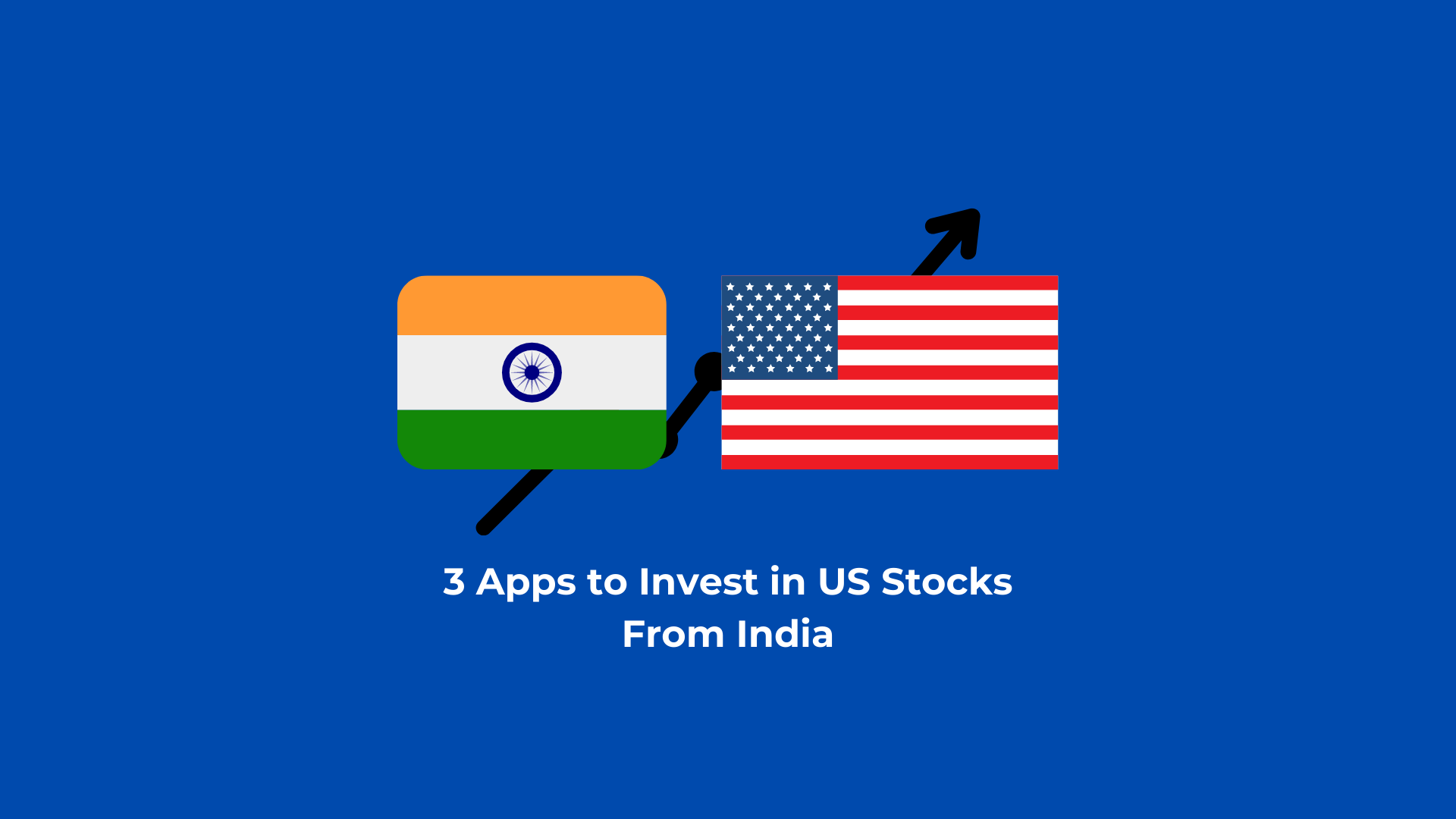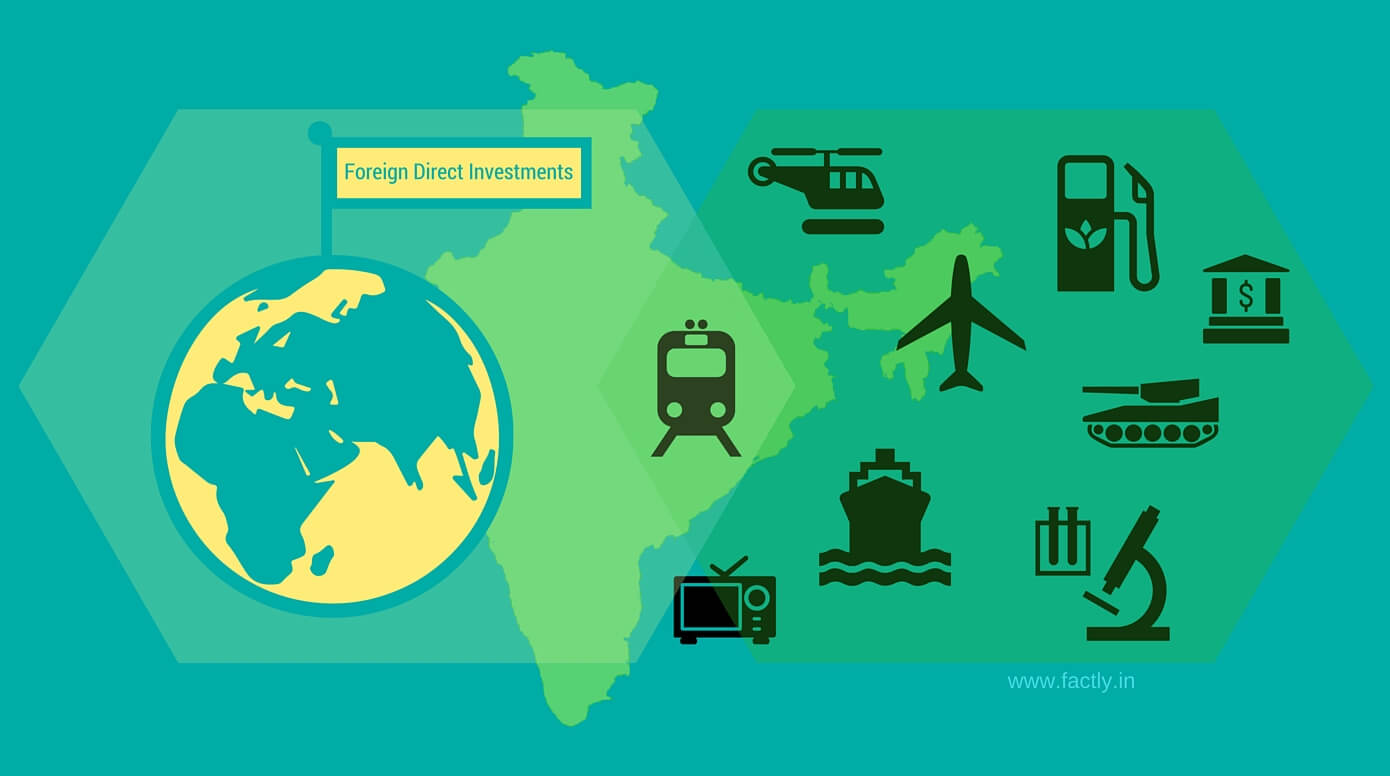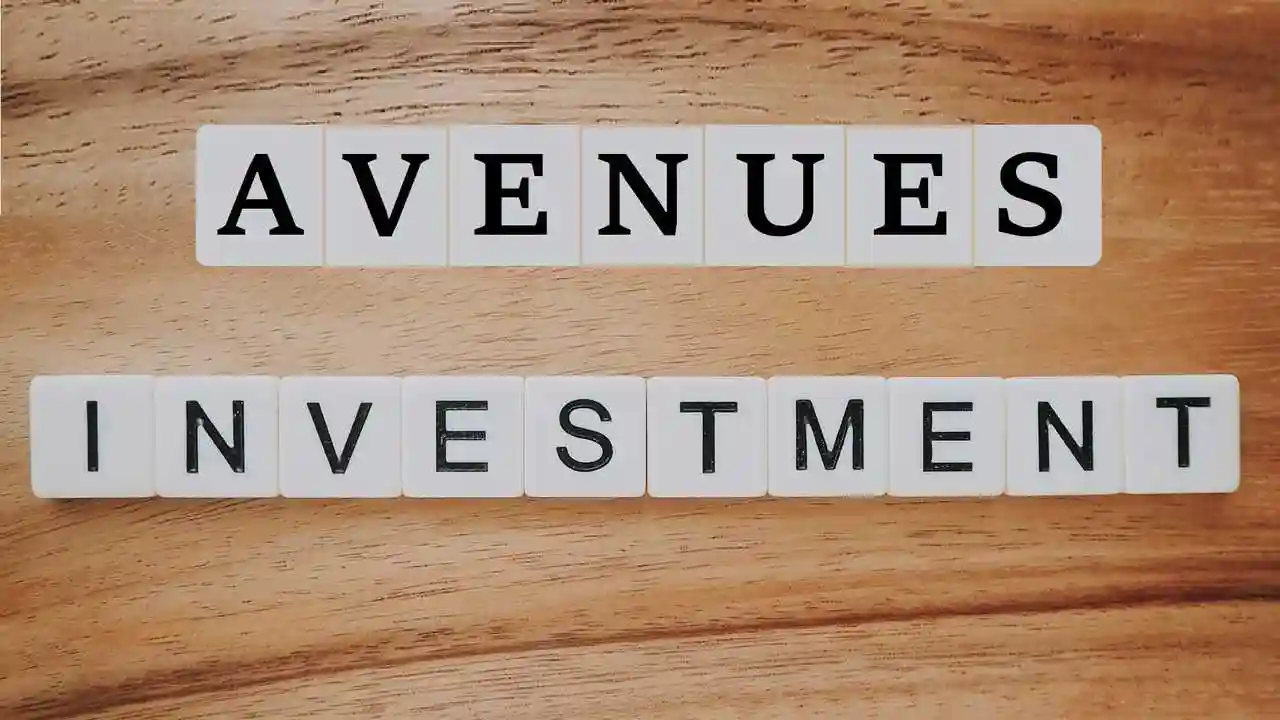Investments in India: Why Investing is Important & Where to Invest 2022?

Investments in India: Why Investing is Important & Where to Invest 2022?
Purchasing the resources that respect the value over time and dealing with returns in the shape of income checks or capital gains is the practice of investing. In a broader sense, investing money can mean devoting time or resources to bettering your or others’ lives. But in finance, investment refers to buying stocks, real estate, and other things of value to make money or capital gains in India.

How Do Investments Operate?
The easiest way to understand how investing works is to get an asset for a low price and then sell it for a higher price. This type of investment return is known to be capital gain. One strategy to make money investing is to generate returns by achieving capital gains or selling off resources for a profit.
Appreciation is the term that is used to describe the increase in value of investment between the time it is bought and sold.

- A corporate bond may increase in value if it pays 5% annual interest and the issuing company issues new bonds that only pay 4% interest, making yours more attractive.
- A share of stock may give value when a company starts developing a hot new product that is associated with positive results, increases revenues and raises the stock’s value on the market.
- A home could increase in value because you remodeled the property or the neighbourhood that grew more popular with new families with children.
- A commodity like gold may increase in value because the U.S. Dollar declines in value, increasing demand for gold.
When you purchase and hold resources that produce income, investment works in addition to capital gains and appreciation rewards. The funds of the owner are to buy resources that have money flow over time and keep them without selling when it was against making investment income by selling an asset.
How do investments work?
Investment has a clear and straight definition. It is an investment designed to grow your money so you can achieve a variety of goals. These goals can be paying off debt, saving for retirement, paying for the children’s further education, or putting up an emergency fund. An asset bought with the hope of increasing in value over time is known to be an investment in financial jargon.

Investing entails placing your money into one with the potential to grow in value over time, giving you a return on your investment. Usually, it provides you with a financial interest in the business or other asset you put your money in.
Why Make an Investment?
To reach your goals, investing is necessary. The only way of improving your future is to do this. By investing, you are building capital for a rainy day and saving money in India. Additionally, putting money very consistently and always forces you to save money on a regular basis, which will help you develop financial discipline over time.
The Effects of Price and the Value of Investments
Simply just put, inflation is a rise in the cost of goods and services. Your purchasing power and money’s value are both diminished. You can buy fewer products with the same amount of money when inflation rates grow. The percentage of inflation is outside of your control. If you want to remain to be faster than inflation, you must have enough money now to buy the full variety of the things you want to believe in the future.

Capital doesn’t, however, exceed on its own. Your money must generate returns if it is to grow. You should put in your money if you want to get returns. Investments are therefore it is always there to combat inflation.
Earning returns that outpace inflation is crucial because if you don’t, your current savings may not be okay to cover future costs for goods and services.
Different kinds of Investments
There are many different investment alternatives available to you. Before investing in any of the particular investment options, you must evaluate your needs and risk tolerance. Investments can be categorized to be either active or passive. To engage in active investing, you must dynamically alter the resources in your profile in response to market and economic trends. You must have the necessary time and investment knowledge to engage in active investing. The best illustration of active investing is equity funds.

On the other side, passive investments do not necessitate your active involvement. You put your money into a buy and hold it there for a set period of time. It is known to be the buy-and-hold investment approach.
This investing approach is suggested for all people who lack time to handle their finances.
Popular Indian Investment Options
There are many different investment alternatives available to you. However, you must be sure that you are only investing in other options that match your risk tolerance and fulfill your needs.
The top 7 investment possibilities in India are as follows:
1. Direct Investment: Direct equity is the most effective investment in vehicles, sometimes known to be stock investing. Purchasing stock in a firm entitles you to a part of that business. You directly finance the expansion and improvement of the company. You must have enough time and market understanding to profit from your investment.
If not, direct stock investing is just as risky as looking. Any investor with a Demat profile and has undertaken KYC verification can purchase stocks from publicly traded companies through the understood stock interchange. The best investments for the long run are stocks. Due to the impact of major economic and commercial factors on equities, you must actively manage your resources. Additionally, you must be aware that the profits are not ensured and be ready to accept the risks involved.

2. Mutual funds: Since they have been there for a while, mutual funds are becoming more and more well-liked by millennials. A mutual fund pools investments from different institutional and people participants who share the same investment aim.
A financial professional known to be the fund manager oversees the pooled funds and makes investments in securities and other resources to maximize returns for investors. The three main categories of mutual funds are debt and hybrid funds. Debt mutual funds in bonds and papers, whereas equity funds, invest in stocks and instruments relating to the stock market.
Equities and debt instruments are both given their money by hybrid funds. Mutual funds are universal financial products that let you start and stop investing whenever it’s convenient for you. Any person may think about investing in a joint. To plow money into mutual funds, you must make a contribution; the fund manager will take care of the portfolio construction.
However, it is suggested to only make investments in those investments whose risk profiles and goals line up with yours. Returns are not assured because they are entirely based on market fluctuations. Keep in mind that a fund’s other performance does not guarantee future results.
3. Fixed Deposits: First Banks and other financial companies provide the option of investing in fixed deposits, which allows you to deposit a big sum for a set length of time and earn interest at a set price. Fixed deposits, against mutual funds and equities, provide total capital protection and guaranteed returns. However, since the returns stay the same, you make a compromise.

The cautious investor should choose fixed deposits. The interest rates on fixed deposits vary depending on the state of the economy and are set by the banks in accordance with the results of the RBI’s policy review. Although fixed deposits are traditionally locked-in investments, investors are often allowed to use them to be the collateral for loans or overdraft facilities. A fixed deposit with tax benefits has a 5-year lock-in.
4. Consistent Deposits: Another fixed-term investment is a recurring deposit (RD), which allows investors to put up a set sum each month for a predetermined period in exchange for a fixed interest rate. RDs are available through the bank and post office branches. The sector providing it sets the interest rates. An RD allows investors to make little monthly investments to amass a reservoir over a predetermined time frame.
RDs provide total capital protection in addition to returns that are ensured. For risk-averse investors, RDs are suggested, just like fixed deposits. Public Provident Fund (v.1) A long-term tax-saving investment company with a 15-year lock-in period is the Public Provident Fund (PPF).
The Indian government is the one who is providing it, and the government will back your money. The Government of India adjusts the PPF interest rate offered on a quarterly basis. At the conclusion of the 15-year period, the investor can withdraw the complete corpus completely tax-free.
PPF allows partial withdrawals and loans as well, given a few requirements are satisfied. If specific needs are met, premature withdrawals are allowed, and when your investment reaches maturity, you can prolong it for additional five years.

5. Employee Pension Plan: Another retirement-focused investment in the motor is the Employee Provident Fund (EPF), which allows salaried people to benefit from a tax deduction under Section 80C of the Income Tax Act of 1961. EPF deductions are particularly made to be the percent of an employee’s monthly pay, and the employer contributes a matching amount.
The EPF withdrawal corpus is completely tax-free the moment it matures. Each quarter, the Indian government sets the EPF rates and provides a proposal on your EPF deposits.
In accordance with the Voluntary Provident Fund, you may donate more than the minimum value for the required amount (PPF). You should be aware that your EPF profile matures only when you reach retirement and that you may only access your resources in the EPF if you meet specific requirements.
/Investingjourneypic-a9bb92f557694caaaa92b761eb2cadd9.jpg)
6. National Retirement System: A relatively recent investment option for reducing taxes is the National Pension System (NPS). Investors who subscribe to the NPS plan must stay locked in until retirement and can expect major returns than those from PPF or EPF. This is so because the NPS provides plan alternatives that put money into stocks. A part of the NPS maturity corpus, which is not tax-free, must be used to make payments that will provide the investor with a regular pension.
Only 40% of the accumulated corpus may be withdrawn to the lump sum; the remainder is always invested in an annuity plan. There is some government personnel who must subscribe to NPS.
7. Public Provident Fund: A lengthy tax-saving investment company with a 15-year lock-in period is the Public Provident Fund (PPF). The Indian government is the one who is offering it, and the government will back your money. The Government of India adjusts the PPF interest rate offered on a quarterly basis. At the conclusion of the 15-year period, the investor can withdraw the full corpus completely tax-free. PPF permits partial withdrawals and loans as well, provided a few requirements are satisfied. If certain requirements are met, premature withdrawals are allowed, and when your investment reaches maturity, you can prolong it for an additional five years.
What Type of Investment Should You Make?

Given the variety of investment vehicles available, it is common for investors to struggle with this decision. If you’ve never given them money before, it’s probable that you’re unsure about where to put your money. You wouldn’t want to incur financial losses by selecting the wrong investments.
Therefore, we advise that you think about the following factors while making investment decisions:
1. Age: Young investors specifically have more time to sink money in a few of the commitments. If you have a long career ahead of you, you can put money into vehicles with a long-term perspective and slowly raise your investment to be your income grows. For this reason, equity-oriented investments like equity mutual funds would be preferable to fixed deposits for new investors. However, older investors can choose to put money into safer options like FDs. As you get older, you need to change your investments.
2. Goal: Long-term or short-term investment goals are both possible. For a short-term aim, you should choose a safer investment, and for a long-term purpose, you should think about the high return-generating ability of stocks. You may be able to ensure that your demands are either negotiable or non-negotiable.

Assured investments would be a wise choice for non-negotiable goals like a child’s education or a down payment for a home. Investing in equity investments or shares can be of benefit if the purpose is negotiable or if it can be delayed by a few months. Remember that if these resources do well, you could achieve your goals sooner than expected.
3. Profile: Your profile should be taken into the profiles when selecting an investment option. The amount of money you make and the number of people who rely on you financially are important factors as well. If he has to take care of the family, a new entrepreneur with plenty of time may be unable to accept equity-related risks.
Similar to this, an older person without dependents and a reliable source of income can decide to plow money into stocks to get better returns. Because of this, it is true that there is no such thing to be a universal investment strategy. To get the most out of investments, a serious thinking process and planning must be put into place.
What should my investment strategy be?

Finding the appropriate investment that meets your goals and profile is the first step in making an investing plan. When making investing strategies, bear the following in mind:
- Keep things simple and avoid complicated investments you don’t understand.
- Choose investments carefully after organizing a proper kind of research.
- Don’t fall for quick-buck strategies that promise high returns in a short period of time.
- Review your stock and mutual fund investments on a regular basis.
It’s best to start as soon as possible.
You should begin making an investment as quickly as you can. Time is money when it comes to investments. The more the returns on your resources, the earlier you start and the longer you hold onto them. Consider the situation below. Assume that you and your brother, who is 35 years old, begin investing Rs 1 lakh annually when you reach 25 and do so every year until you turn 58.
Four Steps You Should Follow Before Investing

Establish an emergency fund.
Set up money for any new or unplanned emergencies. An emergency reserve should, on average, equal three months’ worth of spending.
Have money on hand each of the months.
When you have enough money left over at the end of the month after paying all of your bills, it suggests that you could be able to invest the extra money.
Adhere to long-term financial purposes.
A long-term commitment is necessary for investing. It entails continuously putting money to increase your fortune. This requires both financial and emotional commitment. Ensure that you are ready to put in the money.
Availability of retirement profiles.
The easiest way to put their money is through a 401(k), 403(b), or an IRA for the maximum of Americans. If your employer provides a retirement plan, sign up for it. If not, discuss your alternatives for retirement plans, like IRAs, with your banks or another financial counselor.

Commonly Used Financial Terms for Investing
Investment terminology often gives the impression of being unique. You should be familiar with a few critical terms while researching investing or thinking about making your first investments.
Know These 14 Financial Terms Before Investing
Bond Bonds organize an IOU from a business or country. The issuer of the bond gives the warranty to pay you a set amount of interest over a predetermined time period.
Loss or gain in the capital
the gap between the purchase price and the selling price of an investment.
Document of deposit
a kind of profile for medium- to short-term savings that holds a set sum of money for a set amount of time, like six months or a year. The interest percentage is often higher than that of a savings account.
Accumulated interest
added interest to the good you already receive on your saving or investment. This increases the worth of your money to be the function of time.
Diversification
Investment in a variety of securities, like equities, bonds, and commodities, to diversify risk. The process reduces your risk.

Dividends
A sum of money that is shared and given to shareholders from a company’s profits.
401(k) plan
A retirement plan provided by the employer that allows employees to put in their money to be a part of their salary. Taxes won’t be paid on the money until you take it out. Some of your contributions may be matched by your employer.
Individual retirement account (IRA) A retirement plan with tax benefits. Depending on the kind of IRA and your income level, donations may be tax-deductible, tax-deferred, or tax-exempt.
Cash-market fund
A class of mutual funds that specifically carries little risk. High-quality, short-term corporate or government debt is bought by money market funds, which pay interest to shareholders.
A mutual fund
A variety of stocks, bonds, and other financial resources are bought by mutual funds, which continuously aggregate the money from different investors.
Risk acceptance
How much of your first investment are you ready to lose in change for the chances of a major return?
Portfolio
The total value of all a person’s different investments.

Security
Any type of investment in a vehicle, like debentures and other securities
Stocks
A variety of financial instruments that represents a small piece of a company’s ownership and gives the owner a proportionate claim to a part of the company’s resources and income.
edited and proofread by nikita sharma



